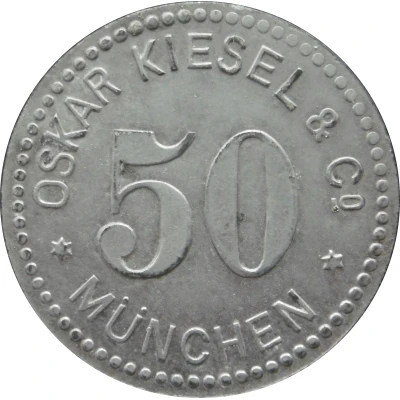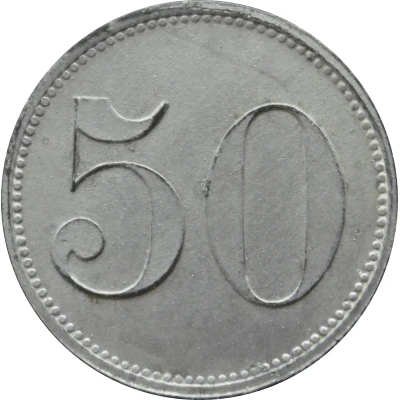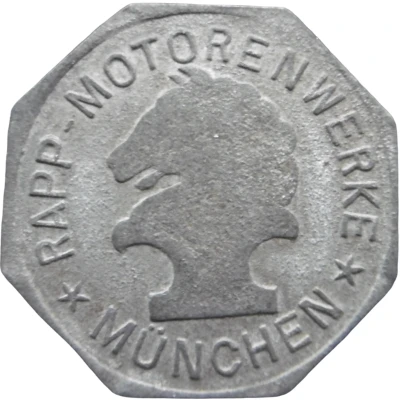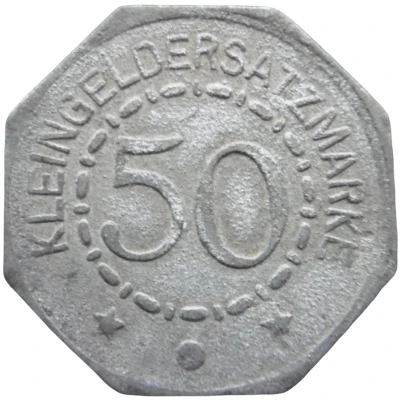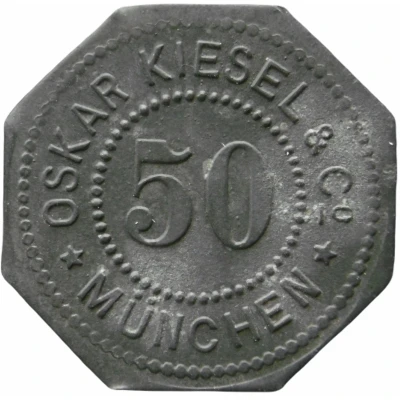
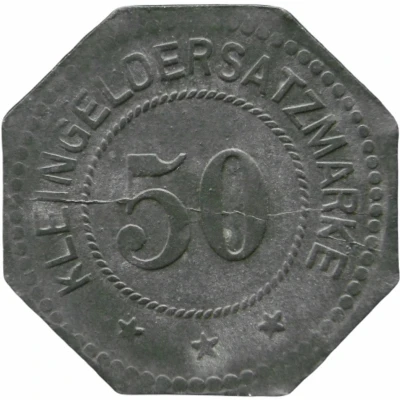

© Willem63 (CC BY-NC-SA)
50 Pfennigs - München (Oskar Kiesel and Cº) ND
| Zinc | 3.2 g | 24.5 mm |
| Issuer | City of Munich (Federal state of Bavaria) |
|---|---|
| Type | Standard circulation coin |
| Value | 50 Pfennigs (50 Pfennige) (0.50) |
| Currency | Mark (1914-1924) |
| Composition | Zinc |
| Weight | 3.2 g |
| Diameter | 24.5 mm |
| Thickness | 1.3 mm |
| Shape | Octagonal (8-sided) |
| Technique | Milled |
| Orientation | Medal alignment ↑↑ |
| Demonetized | Yes |
| Updated | 2024-10-04 |
| Numista | N#284256 |
|---|---|
| Rarity index | 97% |
Reverse
Pearl rim, legend surrounding beaded circle with denomination centered
Script: Latin
Lettering:
KLEINGELDERSATZMARKE
50
★ ★ ★
Edge
Plain
Comment
Menzel: BBBFa: Maschinen und Motorenfabrik
Interesting fact
The 50 Pfennigs coin from Munich (Federal state of Bavaria) made of Zinc weighing 3.2 g was minted during a time when Germany was going through a period of rapid inflation. In the early 1920s, the value of the German mark had decreased significantly, and the government was forced to introduce new coinage to keep up with the increasing prices. The 50 Pfennigs coin was one of the new coins introduced during this time, and it was designed to be made of a cheaper metal, zinc, to reduce production costs. Despite the coin's small denomination, it was an important part of everyday transactions in Germany during this period.
